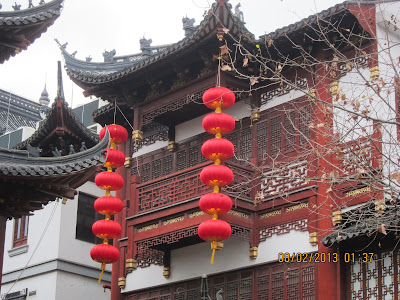Several days before the new year the house is thoroughly
cleaned, it is said that you need to sweep out the last year and welcome in the
new year.
It is estimated that a sixth of the world celebrates Chinese
New Year.
On CNY eve fireworks are set off all over the Shanghai and it is
believed to be the biggest non organized display on the planet.
This year starts the year of the snake, the snake has a
mixed reputation in China, it is associated with wisdom, beauty and
intelligence but also pride and anger.
This year on the annual New Year's Eve gala on TV, the producers
were order to make the show a more low-key affair, in the wake of the new
leadership's recent crackdown on corruption and official extravagance.
Seeing RED - The color
red and other bright colors is commonly worn throughout the CNY. It was once
believed that red could scare away evil spirits and bad fortune. Today it
represents prosperity, fortune and good luck, and it shows happiness.
Wearing new clothes from head to toe, symbolizes a new
beginning in the new year.
This is my 50th post!
Over the past 7 months the blog has seen over 1400 page views, last month
there was 168 page views. It has been
fun to do. It has forced me to take lots of pictures and do a lot of research. The
pictures has helped in remembering the many things we have been lucky enough to
see and do and the research has helped me to better understand another part of
the world and its people. All is good.
I would like to thank
everyone for visiting. I am very happy that I started it and I hope you have enjoyed looking at it. Below are some misc. pictures of CNY.
 |
| around CNY you find tables and tables of people selling red underware |
 |
| checking out some lucky undies |
 |
| ME always gets stopped by the Chinese for photo ops |
 |
| a money tree, a cross between the hong bao money envelops and a x-mass tree? |
 |
| I like this shot with the outline of the buildings in the background |
 |
| the year of the snake on the full moon of the Lantern Festival |
 |
| fireworks over the Huangpu river |



































